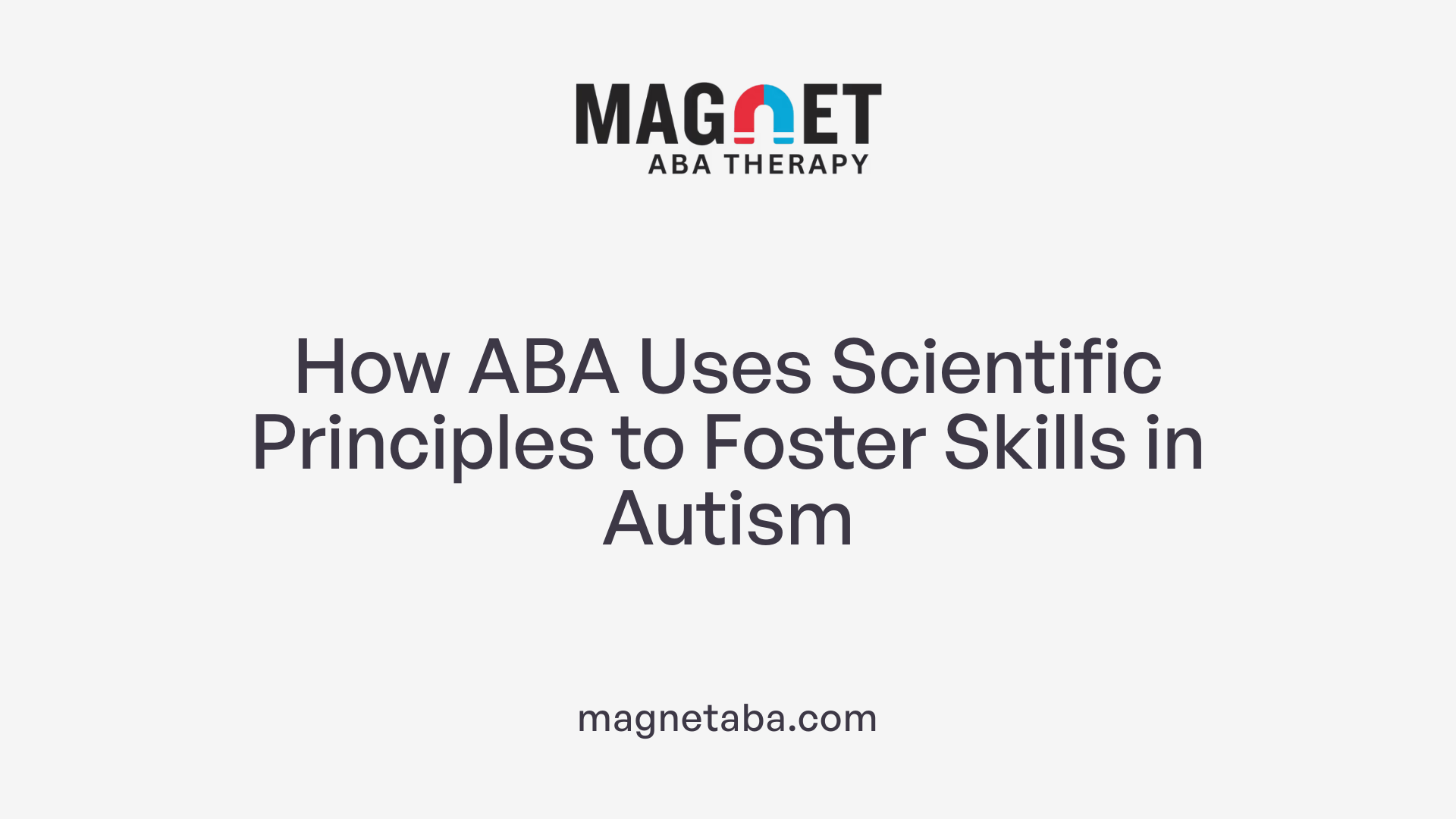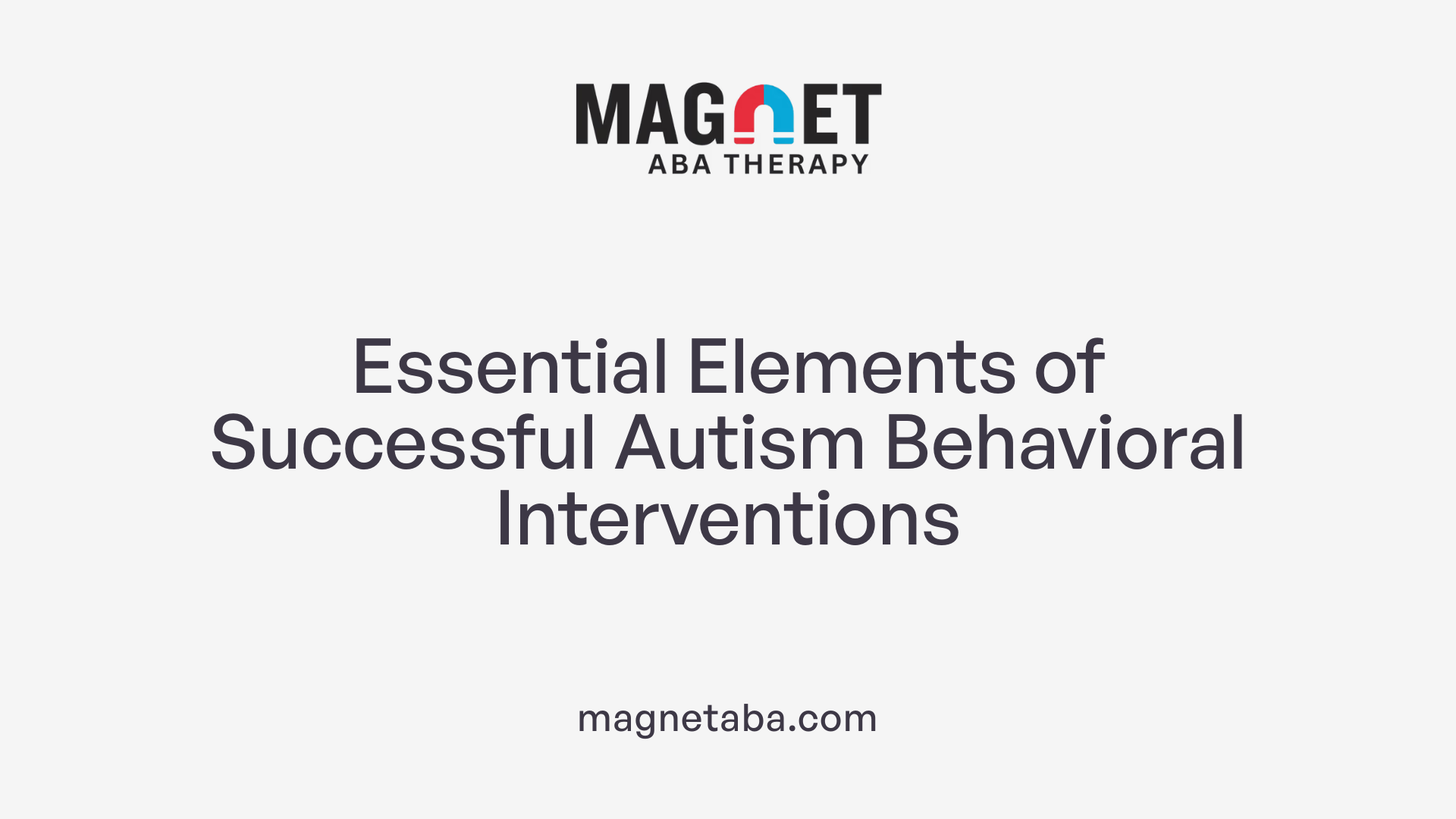Understanding the Role of Motivation in Autism Therapy
Motivation is a crucial yet often underappreciated factor in the success of behavioral therapy for individuals with autism. Applied Behavior Analysis (ABA), a leading evidence-based approach, harnesses motivation strategically to foster positive behavioral changes, enhance social skills, and improve communication. This article explores the intersection of motivation and ABA therapy, highlighting its significance, the mechanisms through which motivated engagement maximizes therapy outcomes, and how professionals tailor interventions to individual needs.
What Is Applied Behavior Analysis and How Does It Support Individuals with Autism?

What is behavioral analysis therapy and how does it help individuals with autism?
Applied Behavior Analysis (ABA) is a scientific approach that applies principles of learning and behavior to improve essential skills in individuals with autism. It focuses on observing and modifying behaviors by analyzing antecedents and consequences to encourage positive behaviors and reduce challenges.
Definition and scientific basis of ABA
ABA is rooted in operant conditioning, using techniques such as stimulus control, reinforcement, and extinction. This approach includes breaking complex skills into manageable parts and systematically teaching behaviors that are significant for social, communication, and daily living.
How ABA uses behavioral principles for autism
ABA employs various interventions like Positive Reinforcement, Discrete Trial Training (DTT), and Pivotal Response Training. Positive Reinforcement strengthens desirable behavior through rewards, while DTT breaks skills into smaller tasks for targeted teaching. Pivotal Response Training encourages broader areas such as motivation and self-management to enhance engagement.
Role of reinforcement and individualized intervention
Reinforcement forms the core of ABA strategies, with a focus on rewarding correct responses to build skills without harmful side effects. Individualized intervention plans are developed by assessing each person's needs, preferences, and motivation levels—ensuring therapy is engaging and effective.
Goals such as enhancing social, communication, and daily living skills
ABA aims to improve crucial areas in the lives of those with autism by teaching communication methods like the Picture Exchange Communication System (PECS), fostering social interaction, and promoting independence in everyday tasks.
Evidence supporting ABA’s effectiveness
Numerous scientific studies and controlled research confirm ABA's effectiveness, showing significant cognitive and adaptive skill improvements. It is widely recognized and regulated in clinical and social settings, underscoring its role as a leading therapy for autism.
Who Provides Behavioral Analysis Therapy and What Qualifications Do They Hold?

Roles of BCBAs and BCBA-Ds in autism therapy
Behavioral analysis therapy for autism is primarily delivered by professionals known as Board Certified Behavior Analysts (BCBAs) and those holding a doctorate-level credential, BCBA-Ds. These individuals have completed advanced graduate training in Applied Behavior Analysis (ABA), enabling them to design, implement, and oversee personalized treatment plans tailored to individual needs. They carry out behavioral assessments, such as Functional Behavioral Assessments, to identify factors influencing behaviors.
Training and credentialing in ABA
To become a BCBA or BCBA-D, candidates must obtain a master's or doctoral degree in ABA or a related field, complete supervised practical experience, and pass a rigorous certification exam. This rigorous process ensures they acquire not only technical ABA skills but also interpersonal and communication proficiencies that enhance patient engagement and relationship building.
Collaboration with other therapy disciplines
BCBAs often collaborate with other professionals, including speech therapists, occupational therapists, and clinical psychologists familiar with ABA concepts. This multidisciplinary approach enriches therapy, addressing overlapping challenges in communication, motor skills, and emotional regulation.
Settings where ABA therapy is delivered
ABA therapy is flexible in its delivery, occurring across home environments, schools, clinics, and community settings. These varied locations support generalized learning and facilitate real-world application of behavioral skills, maximizing therapy effectiveness.
Importance of professional expertise for effective intervention
The complexity of autism spectrum interventions underscores the importance of highly trained practitioners. Expertise in ABA principles and individualized approaches helps ensure that interventions emphasize positive reinforcement and motivation, are scientifically valid, and lead to meaningful improvements in social and behavioral outcomes.
Key Components of Effective Autism Behavioral Therapy

What are the key components of effective autism behavioral therapy?
Effective autism behavioral therapy is grounded in well-established Applied Behavior Analysis (ABA) principles. A foundational step involves individualized assessment, including Functional Behavioral Assessments (FBA), which identify the reasons behind specific behaviors and inform tailored intervention plans.
Therapy emphasizes setting clear, measurable goals that guide progress. Behavioral strategies such as reinforcement, prompting, shaping, and chaining help teach new skills step-by-step and replace negative behaviors with positive alternatives. For example, shaping reinforces attempts that increasingly approximate desired behaviors, while chaining links smaller skills to build complex abilities.
Caregiver involvement and training are essential for generalizing skills across home and community settings. Engaging families ensures consistency and maximizes the therapy's impact.
Data-driven progress monitoring allows therapists to track response to interventions and make adjustments as needed. By continuously measuring outcomes, therapy remains effective and individualized.
Ethical practice is prioritized, with a focus on positive reinforcement rather than punishment, minimizing harm and supporting lasting change. Collaboration with interdisciplinary teams—including speech, occupational therapy, and psychology—further enriches outcomes, providing a holistic support system for the individual's unique needs.
This comprehensive approach ensures that autism behavioral therapy is precise, effective, and responsive to each individual's behavioral and developmental goals.
The Crucial Role of Motivation in Behavior Therapy
Motivation as a Key Driver of Behavior
Motivation is fundamental to learning and behavioral change, especially in therapy for individuals with autism and disabilities. It drives engagement by influencing the likelihood that a behavior will occur. Therapists observe a child's interests or ask about their preferences to identify what motivates them, enhancing participation and focus during therapy sessions.
Identifying Preferences to Enhance Engagement
Understanding a child's preferred activities or items allows therapists to tailor interventions effectively. By using these preferences as reinforcers, therapy becomes more engaging and productive. This personalized approach increases the chances that positive behaviors will be learned and maintained over time.
Relation of Reinforcer Access to Motivation Levels
The balance between reinforcer access, deprivation, and satiation directly impacts motivation. When a reinforcer is highly desired but temporarily unavailable (deprivation), its motivating power is stronger. Conversely, frequent access (satiation) may reduce motivation. Therapists must carefully manage reinforcer delivery to maintain high motivation levels for behavior change.
Use of Motivating Reinforcers to Replace Challenging Behaviors
ABA therapy emphasizes using highly motivating reinforcers to encourage desirable behaviors and replace challenging ones. These reinforcers promote lasting behavioral improvements without the harmful effects sometimes associated with punishment. Techniques such as the Premack principle use preferred activities as rewards following less preferred tasks, reinforcing compliance and engagement.
Connection to Social Motivation Theory in Autism
Research outlined in the journal 'Child Psychology and Psychiatry' supports social motivation theory, which suggests that social motivation deficits are fundamental in autism. Understanding individual motivation levels related to social interaction guides therapists in customizing behavioral approaches, aiming to enhance social skills in children with autism.
Impact of Anxiety on Motivation and Social Engagement
Anxiety frequently co-occurs with autism and can affect a child's motivation to engage socially. This connection means that behavioral therapies must consider anxiety's influence on motivation to design interventions that better support social participation. Addressing anxiety alongside motivation can lead to more effective therapy outcomes.
Techniques Leveraging Motivation to Improve Behavioral Outcomes
Positive reinforcement strategies
Positive reinforcement is central to ABA therapy, linking desirable behaviors to positive consequences to encourage repetition and reduce negative actions. Therapists identify motivating reinforcers tailored to each individual, enhancing engagement and effectiveness.
Differential reinforcement and shaping methods
Differential reinforcement focuses on strengthening closer approximations of targeted behaviors by rewarding progressions rather than initial attempts. Meanwhile, shaping involves reinforcing successive approximations toward a complex behavior, facilitating skill acquisition in manageable steps.
Premack principle and use of preferred activities
The Premack principle boosts motivation by using a preferred activity as a reward for completing less preferred tasks. This strategy not only reduces challenging behavior but also encourages compliance and participation.
Errorless teaching and prompting correct responses
Errorless teaching minimizes frustration by prompting correct behaviors early and reinforcing them immediately. This approach helps learners acquire new skills efficiently, reducing the chance of repeated mistakes.
Pairing to associate positive experiences with therapy
Pairing techniques build positive associations between the therapist or therapy environment and enjoyable activities. This fosters a welcoming atmosphere that promotes willingness and eagerness in sessions.
Providing choice to increase autonomy and engagement
Offering choices during therapy empowers individuals, increasing their sense of control and acceptance. This autonomy enhances motivation and adherence to intervention plans.
Priming to ease transitions and reduce frustration
Priming prepares individuals for upcoming activities or environmental changes, decreasing anxiety and smoothing transitions. This reduces disruptive behaviors linked to unexpected shifts.
Integrating fun and relaxed atmosphere for therapy effectiveness
Maintaining a fun, relaxed, and engaged environment maximizes development opportunities. Enjoyable therapy sessions foster consistent participation and reinforce positive social interactions.
Tailoring Motivation-Centered Interventions to Individual Needs
Using assessments to identify motivators
Identifying what motivates an individual is central to effective ABA therapy. Therapists assess motivation by observing interests or directly asking about preferences, ensuring therapy activities align with what the child finds engaging. This enhances participation and progress.
Incorporating motivation in intervention design
Motivation impacts how well a child responds to therapy. Strategies such as the Premack principle use preferred activities as rewards to encourage completion of less preferred tasks, reducing challenging behaviors and improving cooperation.
Pivotal Response Training as a child-centered approach
Pivotal Response Training targets broad behavioral areas like motivation and self-management through play-based, child-led interactions. This approach naturally increases motivation by embedding learning in enjoyable, meaningful activities rather than focusing on isolated behaviors.
PECS for communication in low-verbal individuals
The Picture Exchange Communication System (PECS) empowers individuals with limited verbal skills to communicate needs and emotions using pictures. This enhances motivation by fostering successful interactions, which can lead to more complex communication.
Generalization of motivational strategies across environments
ABA emphasizes generalizing skills by applying motivational reinforcers and strategies across settings, ensuring behaviors learned in therapy transfer to home, school, and community environments.
Role of ongoing evaluation and adjustment
Continuous assessment allows therapists to monitor motivation levels and modify interventions accordingly. Adjusting reinforcers or teaching methods ensures sustained engagement and effective skill development tailored to each child's evolving needs.
Broader Implications and Future Directions in Motivated Behavioral Therapy
How Is Motivation Integrated Into Clinical ABA Practice?
Motivation is increasingly recognized as a central element in effective Applied Behavior Analysis (ABA) therapy. Clinical approaches prioritize identifying individual motivators through observation and direct communication, enhancing engagement and cooperation during sessions. Strategies such as using highly preferred reinforcers, the Premack principle, and pairing positive experiences with therapists help sustain motivation throughout skill development.
What Are the Advancements in Regulation and Standardization of ABA Services?
ABA services for autism have gained stronger regulatory frameworks, including licensure, certification, and insurance mandates. This standardization ensures therapists meet professional training requirements, such as obtaining master's degrees in ABA. Regulated services emphasize environmental and motivated interventions, improving treatment accessibility and quality across various social and clinical settings.
Why Is Motivation Important for Therapists’ Training and Skills?
Therapists trained in ABA develop essential interpersonal skills like active listening, relationship building, and understanding motivational drivers. These abilities enable them to tailor interventions effectively and enhance therapeutic alliances. Comprehending motivation equips therapists to apply techniques such as shaping, differential reinforcement, and errorless teaching with greater precision and success.
What Research Supports Motivation as a Success Factor in ABA?
Empirical findings affirm that incorporating motivation into ABA leads to more substantial gains in cognitive, social, and adaptive skills for children with autism. Studies highlight motivation’s role in engagement, which directly influences learning outcomes and the effectiveness of behavioral interventions. Additionally, research published in reputable journals emphasizes the importance of addressing social motivation deficits, a core feature in autism.
How Does Motivation Potentially Improve Social Skills and Anxiety Outcomes?
Understanding motivation allows therapists to design interventions that not only foster positive social behaviors but also mitigate co-occurring anxiety. By focusing on enhancing social motivation, therapy can facilitate better emotional expression, peer interactions, and self-management, contributing to improved quality of life.
What Is the Growing Recognition of Motivation’s Centrality in Autism Therapy?
The evolving perspective on motivation has shifted ABA from a primarily behavior-focused model to a more holistic, child-centered approach. With motivation as a foundation, therapies like Pivotal Response Training and communication systems become more effective and sustainable. This growing recognition influences future directions, aiming to optimize individualized treatments and extend benefits across different environments.
Motivation: The Cornerstone of Effective Behavior Therapy
Motivation stands at the heart of successful behavioral therapy for autism, transforming challenges into opportunities for growth. Through the science-backed strategies of Applied Behavior Analysis, motivation is carefully assessed and skillfully woven into individualized interventions that foster meaningful behavioral change. From positive reinforcement to child-centered programs, understanding and leveraging motivation enhances engagement, accelerates learning, and enriches the quality of life for individuals with autism. As research deepens and clinical practices evolve, recognizing motivation’s pivotal role is crucial for therapists, caregivers, and stakeholders committed to empowering those on the autism spectrum.
References
- How ABA Interventions Promote Positive Behavior
- 10 ABA Techniques for ASD
- Testing the social motivation theory of autism: the role of co ...
- Applied Behavior Analysis - an overview
- Board Certified Behavior Analysts (BCBA)
- Applied Behavior Analysis (ABA)
- Applied Behavior Analysis Providers
- What Are the Key Components of ABA Therapy?
- Behavioral Management Therapy for Autism | NICHD












